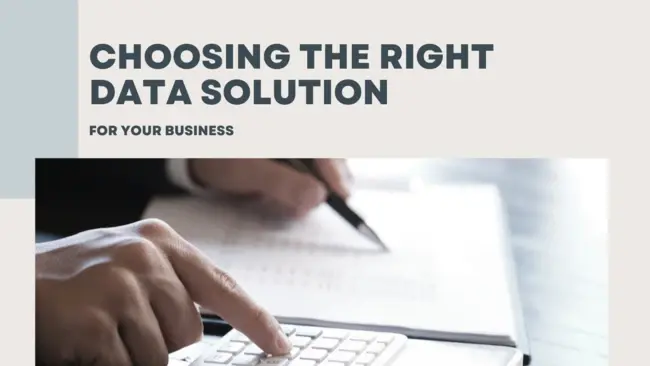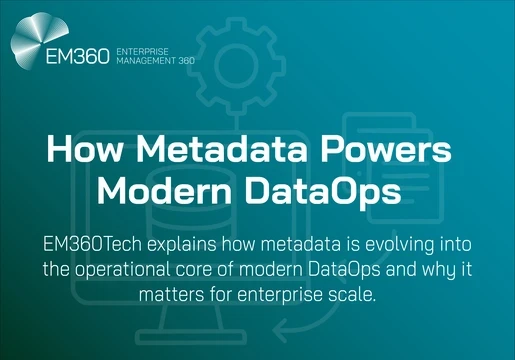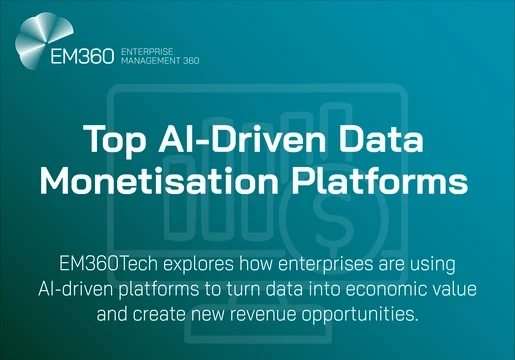Data empowers business managers, investors, and regulators to make decisions critical to accomplishing their long-term objectives. Gathering and analyzing it will reveal insights that assist in strategy creation. Extensive data volumes have also become easily manageable because of the cloud and artificial intelligence (AI) integrations. This post will elaborate on how to choose the right data solution for business purposes.

Importance of Choosing the Right Data Solution
Leading corporations believe collecting, storing, transforming, and analyzing data helps them identify potential threats early. Likewise, data solutions customized for a specific department empower an organization’s in-house teams to resolve challenges without being distracted by too many options suitable for other professionals.
Wisley selecting a reliable data solution can increase a business’s resilience to corporate espionage, data theft, ransomware attacks, and unauthorized data usage. After all, a reputable IT ecosystem embraces cutting-edge cybersecurity and data governance measures. Additionally, you want to modernize data storage and archiving via cloud computing. It reduces data loss risks of physical damage and hardware theft.
Finally, an ideal data solution must facilitate extensive automation because it saves time, increasing productivity while decreasing employee burnout risks. For example, AI and natural language processing (NLP) can categorize consumer survey responses without human intervention. Similarly, a manufacturer can maintain parametric product design files that automatically estimate material requirements.
Steps for Choosing the Right Data Solution
Step 1 – Identify Why You Require It
Brands can utilize data to revise customer journeys or discover new market opportunities. However, these objectives must be short to medium-term milestones, serving a long-term business development strategy. Therefore, companies must distinguish their goals according to the SMART approach.
It means goal determination must be specific, and measuring progress must be feasible. Moreover, goals must be objectively achievable or realistic. There needs to be a predictable timeline, considering the best and the worst possible situations.
For instance, an organization might recognize new data requirements due to its voice of customer software integrations. It must ask the following questions.
-
Should it use its social listening processes across all community forums and networking platforms?
-
Which platforms does its target audience use the most?
-
What might be the data volume and time requirements to gather sufficient information from identified data sources?
-
How does the related data processing help your leaders and teams in decision-making, customer relationship management (CRM), and strategy revisions?
Step 2 – Specify the Scope of Data Processing and Budget
Once you finalize the relevant data strategies, timelines, and the logic as to why these activities are crucial, you will want to prevent inefficiencies. Therefore, limiting the scope of data collection, storage, analysis, and reporting through preliminary financial planning is vital.
You could consult industry experts to predict how much capital your organization requires to develop or procure the right data solution. If you want to restrict the scope of its processes, consider your top priority. After all, responsible managers never let multiple objectives distract them from their critical strategies.
Step 3 – Explore the Data Solutions Available in the Market
After specifying your SMART goals and budget-based scope controls, you will want to explore which data solutions are available for enterprise applications. Most providers will have some priced offerings alongside options enabling you to interact with their sales representatives or product comparison guides.
Reputable data solutions also facilitate sector-targeting service packages and application programming interfaces (APIs). Some brands assign a dedicated manager to help you embed their offerings into your systems. Others host self-service tools that you can customize with independent consultants’ assistance.
Step 4 – Find the Data Solution Suitable for Your Needs
While surveying the available data systems and consultants, you might find multiple providers suitable for your business needs. However, from financial and confidentiality risk perspectives, you will be better off selecting a specific data solution instead of pursuing a complex, multi-partnered arrangement.
When two or more data processing partners exhibit identical services, you can choose the right data solution by focusing on the following aspects.
-
Cybersecurity standards,
-
Previous clientele,
-
Periodic updates,
-
And supported tech helpdesk channels. E.g., emails, chat, video conferencing, etc.
Step 5 – Estimate Financial Costs vs. Benefits
Each data solution provider optimizes the pricing strategy based on past experiences and revenue objectives. Although some brands will provide expensive technology integrations, you surely want to invest in them if they enhance your data governance standards. However, find a trial or hands-on demo version of what the brand has promised in its marketing material.
If the data provider is authentic, you can quickly discover its product guides and consumer education resources. Besides, the availability of technical documentation allows your in-house analysts and engineers to spend less time learning or customizing new data solutions.
Conduct comprehensive cost vs. benefits research when deciding whether to get a data solution. Otherwise, you will invest in an inexpensive data solution that is:
- Prone to data loss,
- Difficult to learn,
- Provides negligible technical documentation,
- And delivers inconsistent patch releases.
Conclusion
Exploring the programs offering adequate data gathering, validation, analysis, and visualization features is time-consuming. Still, a step-wise approach for choosing the right data solution like the one discussed above is non-negotiable.
After all, a qualitative and automation-friendly data solution will offer several competitive advantages you cannot get from competing brands. You also want to leverage SMART goals, budget planning, scope restriction, and market surveys before making the final call.
An incorrect decision will endanger data quality, and your managers will get skewed insights harmful to your organization’s long-term resilience. So, be careful when partnering with a data processing consultant. Ensure the selected data solution brand has an established track record of working with global companies and upgrading its technologies to maximize your gains.







Comments ( 0 )